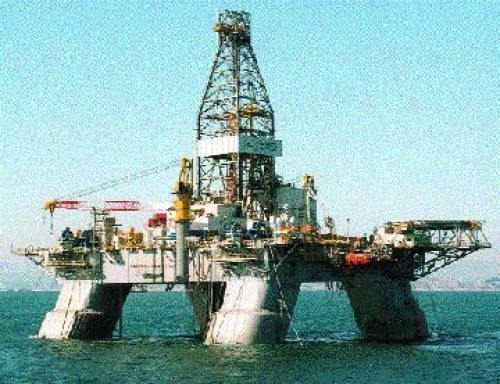Reynauld Songy
May 7, 2007Steve Collins
May 9, 2007More than half of the active oil and natural gas leases in the Gulf of Mexico are now in depths of greater than 1,000 feet, only about 15 years after drilling in the deepest regions became technologically practical, a federal agency said last Tuesday.
In 2006, 70 percent of the oil produced in the Gulf of Mexico and 40 percent of the gas came from deepwater leases, the Minerals Management Service said in a report issued for the Offshore Technology Conference in Houston.
Last year, petroleum companies made 12 new deepwater discoveries, the deepest in 7,600 feet of water. Those discoveries are expected to add about 1.3 billion barrels to Gulf reserves, according to the MMS, which manages federal offshore leases.
The report comes at a time when oil prices are in the mid-$60 range and gasoline prices, according to the AAA, have risen an average of 29 cents per gallon nationwide over the past month.
Although deepwater drilling n in depths of 1,000 feet or more n has taken command in the Gulf, its effect on long-term energy prices is uncertain. Deepwater drilling is much more expensive than the shallower waters of the Gulf that sustained the energy industry for decades.
For example, BP PLC’s Thunder Horse platform, located about 150 miles southeast of New Orleans in about 6,000 feet of water, cost $1 billion and was threatened, for a time, with being lost after damage from Hurricane Dennis in 2005.
Currently, there are about 7,885 active leases in the Gulf, 54 percent of which are deepwater, according to MMS figures. In 1992, there were 5,600 active leases, with only about 27 percent in depths of at least 1,000 feet.
Since 1999, the depths to which deepwater exploration goes has expanded rapidly. The MMS said there are currently 21 discoveries in water depths of at least 7,500 feet. The deepest, Tobago, which was announced in 2004, is in 9,627 feet of water about 200 miles south of Freeport, Texas.
Last October, Royal Dutch Shell PLC said it would tie Tobago with two other deepwater discoveries n Great White and Silvertip n by a spar platform moored in about 8,000 feet of water, making the platform the deepest spar production facility in the world.
Shell would not say how much the project would cost, but estimated it would eventually produce 100,000 oil and 200 million cubic feet of natural gas daily.
The Gulf currently produces about 575 million barrels of oil daily, along with 3.65 trillion cubic feet of natural gas.
File photo • Tri-Parish Times * The long-term effect of deepwater drilling in the Gulf of Mexico remains uncertain. A more expensive form of drilling, companies opted to search for oil and natural gas in shallower waters prior to the last 15 years.







